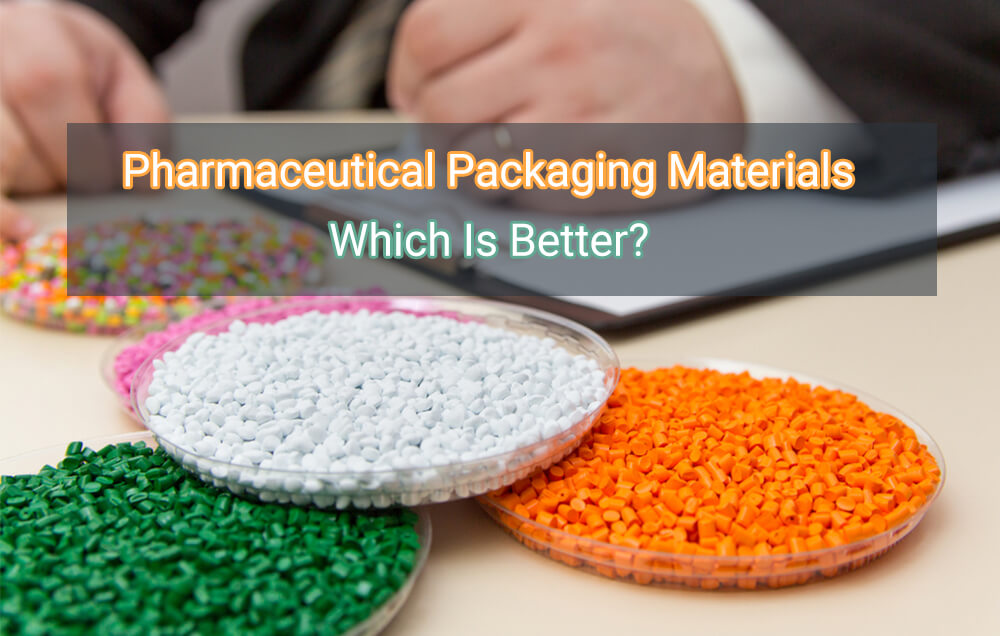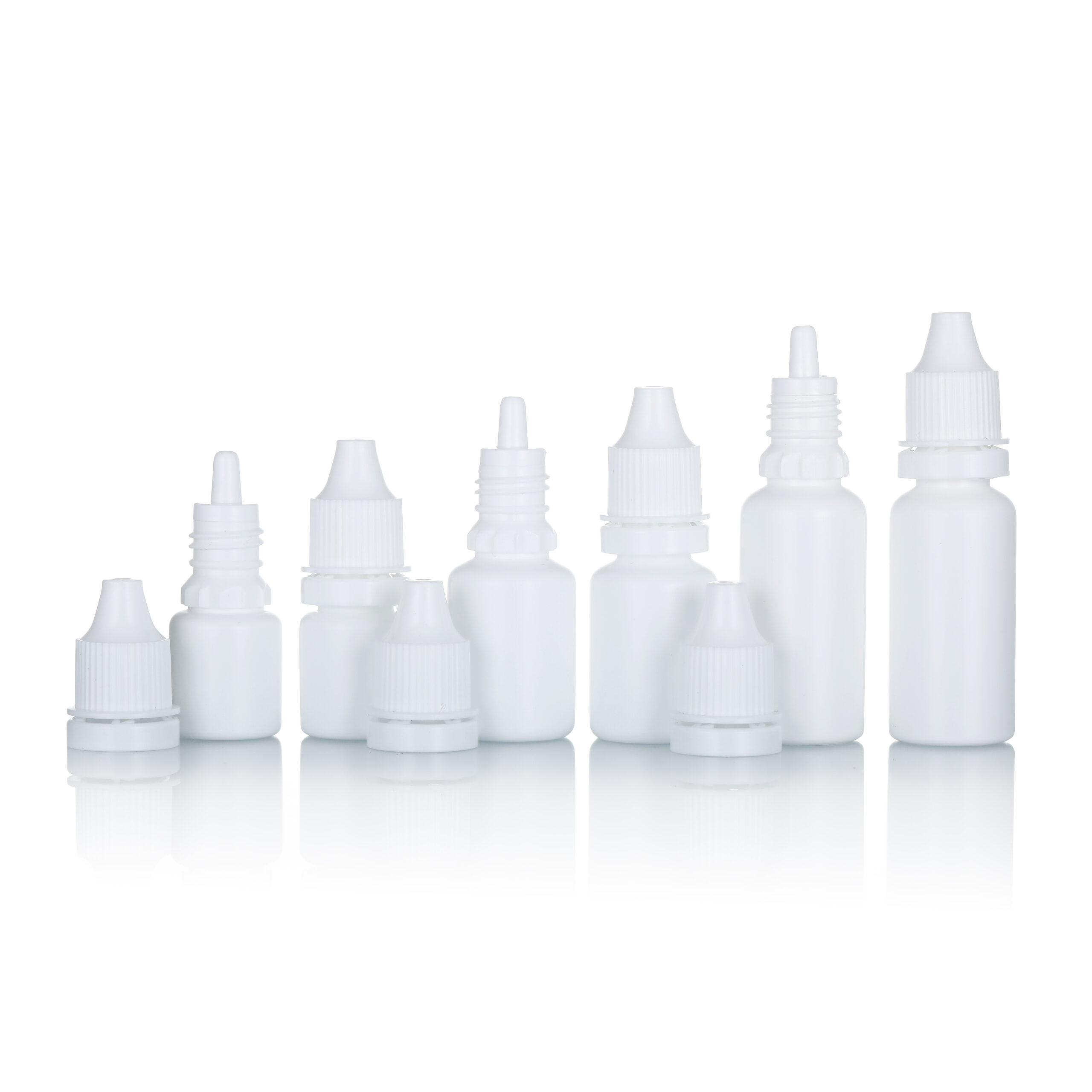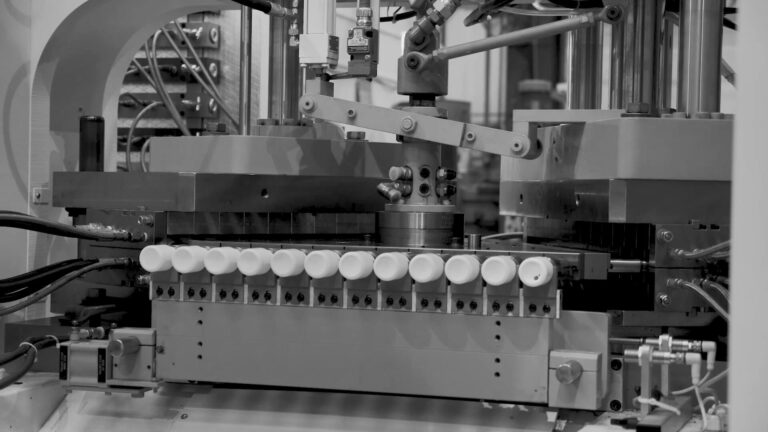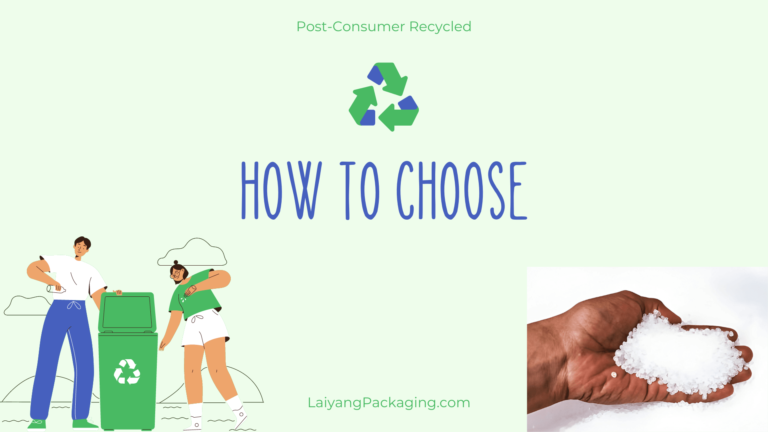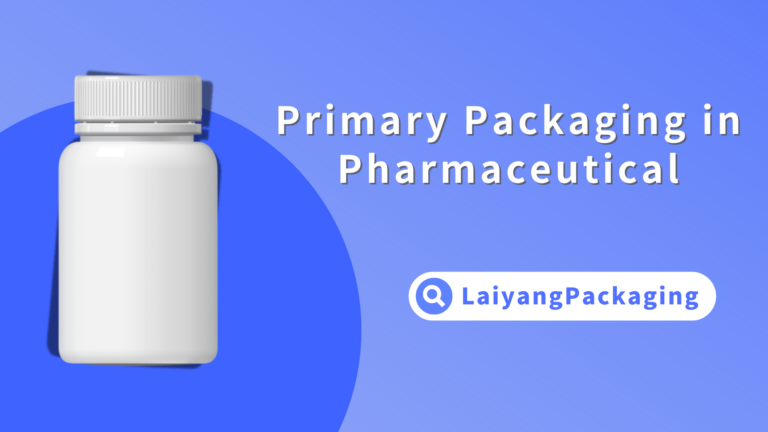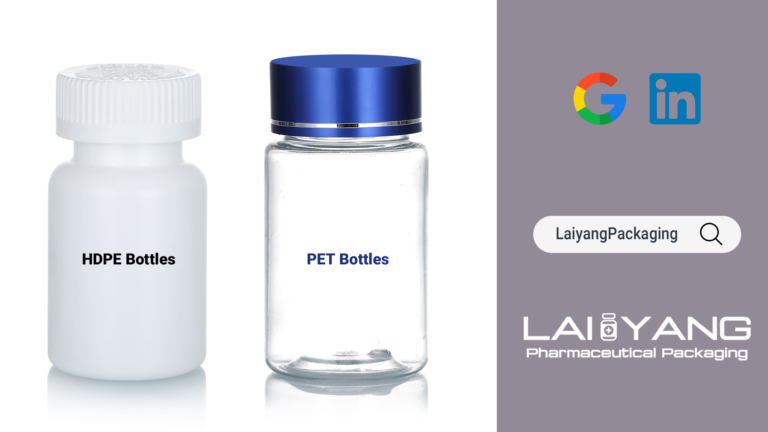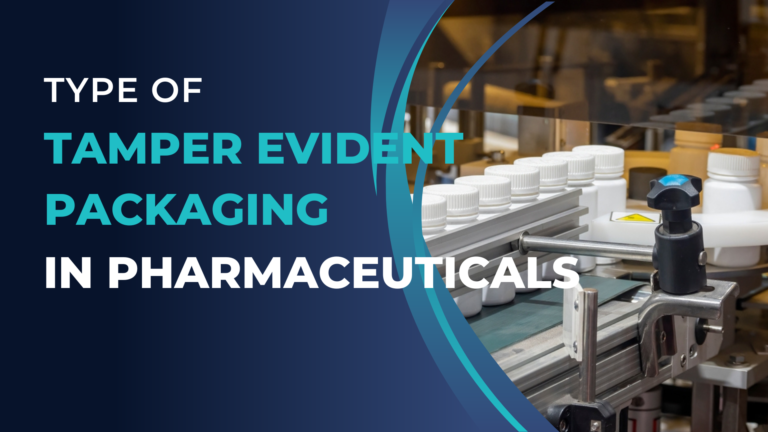Plastic is short for plastic polymer material, which consists of resin and chemical additives as two main components. Compared with glass, plastic has the characteristics of light weight, corrosion resistance, high mechanical properties, easy sealing and low cost, so it has been widely used for drug packaging material in recent years.
What are the advantages of plastic drug packaging material ?
- Good mechanical properties, with a certain strength, elasticity, compression, impact resistance, bending resistance, friction resistance, not easy to break
- With good chemical stability and resistance to various chemical media such as general acid, alkali, salt and water, oxygen, carbon dioxide in the external environment of packaging
- With a certain barrier to gas, water, etc
- With a light wight and its density is about 1/5 of metal, 1/2 of glass
- It has good machining performance, easy to form, heat seal and compound
- Excellent optical performance, it can be transparent or non- transparent, with good printing and decoration performance
- With lower price and transportation cost .
Types of plastic used in pharmaceutical packaging material
What is Polyethylene(PE)?
The monomer is ethylene C₂H₄, and the polymerization reaction results in polyethylene (C₂H₄)nH₂ .Due to its density and structure ,PE consist of Ultra High Molecular Weight Polyethylene(UHMWPE), Ultra Low Molecular Weight Polyethylene(ULMWPE), High Molecular Weight Polyethylene(HMWPE), High Density Polyethylene(HDPE), Medium Density Polyethylene(MDPE), Low Density Polyethylene(LDPE), Linear Low Density Polyethylene(LLDPE).
In pharmaceutical packaging material ,the widely used PE are HDPE and LDPE.
HDPE has a density of 0.941-0.965 g/cm³,melting point is 120 -130 °C(248 – 266 °F) .HDPE is a relatively hard and tough material with strong chemical tolerance,it has a good corrosion to strong acids or bases, and can resist mild oxidants and reducing agents. Besides, it is with a good permeability, relatively low transparency, high tensile strength and can be sterilized by ethylene oxide, steam and radiation.
LDPE has a density of 0.910–0.940 g/cm³ and melting point 105 – 115 °C(221 – 239 °F)。LDPE has a high degree of short and long chain branching, which means that the chains do not pile up into the crystal structure. Therefore, when the instantaneous dipole-induced dipole attraction is small, its intermolecular force is small. This results in lower tensile strength and increased ductility with poor resistance to gases and odors. However, LDPE has the characteristics of soft, transparent and good heat sealing performance.
Disadvantage of LDPE:
Susceptible to stress cracking
High gas permeability, particularly carbon dioxide
Poor UV resistance
Highly flammable
High mold shrinkage
Lower stiffness than PP
Resin Basic Information:
| Property | HDPE | LDPE | Better |
| Density, g/cm³ | 0.941-0.965 | 0.91-0.84 | HDPE>LDPE |
| Tensile Strength (MN/m2) | 21-38 | 6.9-15.9 | HDPE |
| Elongation | 50-800% | 90-650% | HDPE |
| Impact strength (J/12.7mm) | 1.02-8.15 | No break | LDPE |
| Heat distortion temperature | 60-82°C | 40-50°C | HDPE |
| Stiffness ((4.5 MN/m2) | 5.53-10.4 | 1.18-2.42 | HDPE |
| Gloss,%) | 55 | 83 | LDPE |
| Clarity | Translucent to opaque | Near transparent to opaque | LDPE |
| Hardness Shore D | 60-70 | 40-50 | HDPE |
| Elongation at Break,% | 15 | 17.5 | LDPE |
| Elongation at Break,% | 500-700 | 200-600 | HDPE |
| UV light resistance | Low | Low | – |
| Toughness,J/m | 20-200 | 999 | LDPE |
| Water absorption 24h,% | 0.005-0.01 | 0.005-0.015 | HDPE |
What is Polypropylene(PP)?
Polypropylene is a high polymer of propylene with a density of 0.895 and 0.92 g/cm³ and a melting point range of 160 to 168 °C (320 to 331 °F). It is similar to polyethylene in appearance, but lighter more, and is the lightest plastic .
PP is odorless and non-toxic and has many similar characters to PE, especially in solution behavior and electrical properties.It has high resistance to water, mold ,bacteria and chemical . Methyl improves mechanical properties and heat resistance. The mechanical property is better than PE, especially its better rigidity and bending resistance. It is more transparent than PE with better moisture-proof ability and gas resistance ,which can prevent odor through. Because of its good heat resistance to boiling water, PP can be used as packaging materials which need be sterilized at high temperature.
But the aging resistance of PP is worse than PE, and its cold resistance is far less than PE, it’ll become brittle at low temperature ,so it is not suitable for use at low temperature.
PP Resin Information
| Density, g/cm³ | 0.895-0.92 |
| Impact strength, Charpy notched | 2 – 6 KJ/m² at 20 °C |
| Coefficient of thermal expansion | 6*10-5– 1*10-4 1/K at 20 °C |
| Max. service temperature, short | 140°C |
| Melting Point | 160-168°C(320 至 331 °F) |
| Specific heat capacity | 1520 J/(kg.K) at 20 °C |
| Thermal conducivity | 0.41 W/(m.K) at 20 °C |
| Flammability | UL 94HB |
| Toughness | 20-60J/m |
| Water absorption 24h,% | 0.01-0.1 |
If using PP as drug container ,what we should pay attention to?
- Because of its soft textureand poor scratch resistance, the PP drug container should be with good protection during transportation .
- It’ll becomebrittle at low temperature.
- Attacked by highly oxidizing acids, swell rapidly in chlorinated solvents and aromatics
- Heat-aging stability is adversely affected by contact with metals
- With poor paint adhesion and better use labels as decoration.
What is polyester(PET)?
Polyester is a polymer containing ester bonds, a general term for a class of resins. Polyester in pharmaceutical plastic packaging usually refers to polyethylene terephthalate (PET). It has excellent mechanical properties, and its toughness is the largest in the commonly used thermoplastics. The tensile strength of the film is similar to aluminum foil, and the impact strength is 3 ~ 5 times that of the general film. Heat resistance and cold resistance are good; Good gas (oxygen, carbon dioxide and water vapor) barrier, it belong to the medium barrier material. Besides, it has a high transparency ,odorless ,safety ,good resistance to UV , 100% recycle character and can be degraded easily when boiled in hot water .But it can not be autoclaved at a high temperature.
PET Resin Information
| Density,g/cm³ | 1.3-1.4 |
| Gamma radiation resistance | Good |
| UV light resistance | Good |
| Water absorption 24h,% | 0.1-0.2 |
| Elongation at break,% | 30-70 |
| Elongation at yield ,% | 3.5 |
| Strength at break,MPa | 40-70 |
| Strength at yield ,MPa | 50-57 |
| Toughness,J/m | 140 |
Chemical corrosion resistance : PE ,PP and PET
PE has an excellent durability against most solvents.Its tolerance to alcohol, diluted acids and bases is good ,and Oil and grease resistance is moderate. Poor tolerance to hydrocarbons (aliphatic, aromatic, halogenated)
Diluted bases and acids do not react easily with polypropylene. Good tolerance to aldehydes, esters, aliphatic hydrocarbons, ketones and limited resistance to aromatic hydrocarbons, halogenated hydrocarbons and oxidants
Excellent tolerance to alcohol, aliphatic hydrocarbon, oil, grease and dilute acid. Moderate tolerance to dilute alkali, aromatic and halogenated hydrocarbon
| Property | LDPE | HDPE | PP | PET |
| Acetone at 100%, 20°C | Common | Common | Good | Common |
| Ammonium hydroxide at 30%, 20°C | Good | Good | Good | Good |
| Ammonium hydroxide at diluted, 20°C | Good | Good | Good | Low |
| Aromatic hydrocarbons at 20°C | Low | Low | Low | Common |
| Aromatic hydrocarbons at hot conditions | Low | Low | Low | Common |
| Benzene at 100%, 20°C | Low | Common | Common | Common |
| Butylacetate at 100%, 20°C | Common | Good | Common | Common |
| Chlorinated solvents at 20°C | Low | Low | Low | Common |
| Chloroform at 20°C | Low | Low | Common | Good |
| Dioctylphtalate at 100%, 20°C | Common | Good | Good | Good |
| Ethanol at 96%, 20°C | Common | Good | Good | Good |
| Ethyleneglycol (Ethane diol) at 100%, 20°C | Good | Good | Good | Good |
| Glycerol at 100%, 20°C | Good | Good | Good | Common |
| Kerosene at 20°C | Common | Good | Common | Common |
| Methanol at 100%, 20°C | Good | Good | Good | Good |
| Methylethyl ketone at 100%, 20°C | Common | Good | Good | Low |
| Mineral oil at 20°C | Common | Good | Good | Good |
| Phenol at 20°C | Good | Good | Good | Common |
| Silicone oil at 20°C | Good | Good | Good | Common |
| Sodium hydroxide at 10%, 20°C | Good | Good | Good | Good |
| Sodium hypochlorite at 20%, 20°C | Good | Good | Good | Good |
| Strong acids at low concentrated, 20°C | Good | Good | Good | Good |
| Toluene at 20°C | Low | Common | Common | Common |
| Xylene at 20°C | Low | Common | Low | Common |
Analysis and comparison of physical properties of them used as pharmaceutical packaging materials
The physical properties of the packaging material itself also have an important impact on the quality of the drug, so it is extremely important to understand the physical properties of the packaging material.
Density
The density of the resin is closely related to its barrier and mechanical properties and is an important basic parameter affecting the physical properties of a material.
PP:0.91 g/cm³,HDPE:0.94 g/cm³,PET:1.35g/cm³
Density:PET>PE>PP
Barrier Property
The barrier of medicinal plastic bottle is mainly considered by the oxygen transmittance and water vapor transmittance of the material. The barrier of the material will directly affect the quality of the drug during the shelf life, and it is also an important index to evaluate the shelf life of the drug. See the table below:
| Item | Oxygen permeability
[cm³ / (m2·24h atm)] |
Water vapor permeability
[g / (m2·24h )] |
| PET | 95 (23℃,50% ph) | 27.3 (38℃,100% ph) |
| HDPE | 450 (23℃,50% ph) | 10.1 (38℃,100% ph) |
| PP | 300 (23℃,50% ph) | 9.8 (38℃,100% ph) |
According to the data comparison in the table below, PET has a closer texture, so it is more suitable to be used as the base material for medical plastic bottles.
If the drug need containers have better performance of oxygen and water resistance, below tips may be workable:
⑴ Improve the thickness and uniformity of the material: with the increasing thickness of the material, its barrier will also be enhanced, but the thickness is not the greater the better, when the thickness reaches a certain degree, the barrier of the material tends to be stable. On the other hand, maintaining the uniformity of the thickness of the base material can reduce the barrier difference of the base material due to the different thickness of different parts.
⑵ Two or more materials with poor barrier properties are mixed together for processing. This can extend the molecular penetration path in the material, so as to improve the barrier of the substrate, the effect is quite good.
Mixing two or more materials which with poor barrier properties and can extend the molecular penetration path in the material so as to improve the barrier.
⑶ Produce double or multiple layers.The method of forming multi-layer container with other good barrier materials through composite process can significantly improve the barrier property of the material, and also improve the environmental resistance of the material
⑷ The fluoride layer. A high barrier fluorinated layer is formed on the surface of the material through fluorination treatment, so as to change the surface polarity and cohesive energy density of the substrate, so as to slow down the diffusion of gas molecules or water molecules in the material.
Clarity
Clarity:PET>PP>PE
Light accelerates the speed of drug oxidation deterioration, which may cause the degradation of some components in the drug, which will not only make the drug discoloration, precipitation, reduce the efficacy of the drug, and even increase the toxicity of the drug. Among the common resin produced for medicinal plastic bottles, PP and HDPE are translucent, while PET is transparent, so brown or other color masterbatches are usually added to PET during production to keep the bottle dark to prevent sunlight.
Other properties
Hardness:PET>PP>PE
Mechanical properties (flexibility, bending resistance, compression resistance): PET>PP>PE
Air and moisture barrier:PET>PP>PE
Oxidation resistance:PET>PE>PP
Heat resistance:PP>PE>PET
Cold resistance:PET>PE>PP
Thermal expansion:PET>PE>PP
Chemical resistance:PET>PE>PP
Application of pharmaceutical packaging materials
Pharmaceutical plastic bottles have qualitative light,high intensity, not easy damaged, good sealed performance, moisture proof, healthy and meet the special requirements of pharmaceutical packaging,and can be used directly as drug packaging without cleaning, drying .They are widely used for oral solid drug (such as tablet, capsule, granule, etc.) and oral liquid medicines packaging (such as syrup, etc.).
HDPE are commonly used for capsules ,pills, tablets ,and some with small neck can be package liquid.
LDPE is used in packaging industry for pharmaceutical such as squeeze bottles, caps and closures,eye dropper bottle,effervescent closures ,bags which need be soft .
PP are used for syringes , veterinary injection vials, petri dishes, specimen bottles etc.
PET is a good choice to replace glass vials due to its good resistance and lightweight ,they are widely used for nutrition and syrup .
How to Make the Right Choice of Plastic Packaging Materials for a drug product?
It is important to make the right choice of pharmaceutical packaging material for a drug product .Besides the resin basic information and its properties mentioned above, some other factors should be considered during choosing the right packaging material,they are:
Compatibility
Due to the differences in packaging composition and production process, some components in medicinal plastic bottle materials may be dissolved by the drugs in contact, and cause migration phenomenon and release toxic substances, or interact with the drugs themselves, adsorb active ingredients from the drugs and affect the efficacy of the drugs. Therefore, before all medicinal plastic bottles are used, the dissolution test of the substrate should be carried out, which includes six indicators such as solution clarity, heavy metal content, pH value change and ultraviolet absorption.
The degree of protection required
The key to ensure the safety of drugs is to prevent them from deteriorating due to light and heat, moisture and oxidation. Therefore, the medicinal plastic packaging material should use the substrate with good light and heat resistance. And its oxygen and water vapor transmittance of the substrate and container should be controlled within a reasonable range.
Sealing
The drug packaging material must have a good sealing , and ensuring the smooth bottle mouth and seal liner quality are the key to assure the sealing performance , which can greatly reduce the invasion of external water and gas.
Cost
In order to make sure your drug cost is more competitive ,the packaging material cost should be considered. Besides the packaging material cost ,the outer package and decoration cost are also related to the overall cost.
Convenience and safety
The basic function of drug packaging material is to store drug ,but actually it plays more than this . We should consider its convenience and safety during the patient take the medicine. For example, it will be better if the bottle could have a CRC closure to prevent child open it.

